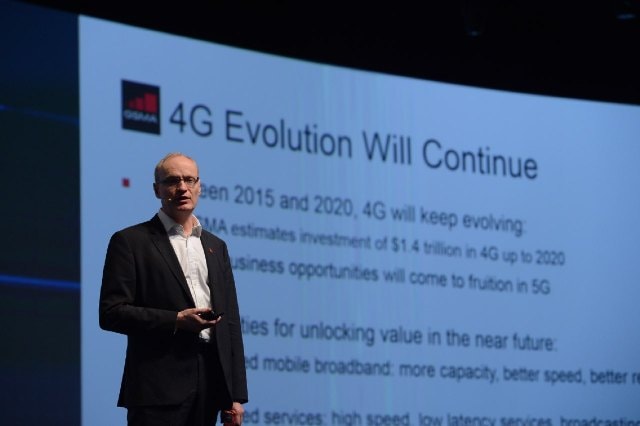New Report Reveals Economic Benefits of C-Band Spectrum for Mobile Broadband
US$440 Million Would be Generated in London and Shenzhen Alone
[Hong Kong, China, Nov.3, 2015] The use of additional C-band spectrum for mobile broadband in London and Shenzhen alone will generate an additional US$440 million (€400 million) of economic benefit whilst protecting the continued operation of incumbent services, according to a new report from the GSMA.
The study, “Use of C-Band Spectrum for Mobile Broadband in Cities: London and Shenzhen”, developed by Plum Consulting with analysis from the GSMA and Huawei, focuses on the impact of mobile operations in the C-band in London and Shenzhen.

Alex Sinclair, Acting Director General & CTO GSMA, releases the report.
The report findings were presented today at the Global Mobile Broadband Forum in Hong Kong, which coincides with the start of the World Radiocommunication Conference (WRC-15) in Geneva. WRC-15 will be pivotal in determining future spectrum allocations for mobile broadband and C-band spectrum, which is under consideration at the Conference, will be key to meeting future data demand.
The report highlights an urgent need for regulators across the globe to address the allocation of spectrum required to meet the huge growth in mobile data traffic, especially in densely populated urban areas. C-band spectrum can provide large contiguous channels that support the delivery of high data rate services such as video.
Mobile data traffic continues to grow rapidly around the world. According to Ofcom, monthly usage per active connection in the UK has risen by 50 per cent every year for the past three years and was over 0.5 gigabytes by June 2014. This puts a conservative estimate of total data traffic in London at 7 petabytes per month. Over the next 15 years, Plum expects average annual growth in mobile data traffic in London to be 35 per cent and this is expected to grow at a similar rate in Shenzhen up to 2030.
The report shows that use of C-band spectrum for mobile broadband can be achieved through the development of sharing techniques to allow mobile services to co-exist with other users of the band, such as satellite and fixed link services. Plum’s study and other independent studies3 show that C-band small cells can successfully co-exist with satellite services, provided that an exclusion zone of a 5-kilometre radius is established around the satellite installations. Similar provisions can be made to ensure the protection of continued operation of fixed link and point to multipoint services that use the band.
“Administrations around the world should make available larger amounts of contiguous spectrum to meet the demand for high speed connectivity in more densely populated environments. C-Band discussions during the WRC-15 offer a unique opportunity which should not be missed,” said David Wang, President, Huawei Wireless Networks. “This joint report highlights the substantial social and economic benefits associated with mobile broadband use of the C-Band on a shared basis with existing services.”
“C-band spectrum will better enable operators to provide consumers with high-speed mobile broadband in city centres,” said Alasdair Grant, Head of Asia, GSMA. “We urge governments to seize the opportunity at WRC-15 and allocate this critical spectrum to safeguard the future of the mobile internet and deliver its undoubted benefits to citizens worldwide.”

